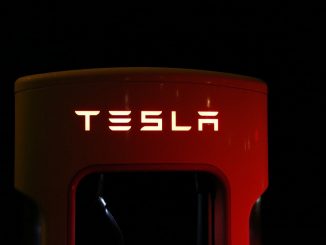In a surprising move, Tesla CEO Elon Musk has given the public a rare glimpse into the heart of the company’s artificial intelligence (AI) operations.
Through a video shared on his X platform account, Musk offered the world a rare peek into ‘Cortex’, an immense AI training supercomputer cluster currently under construction at Tesla’s Austin, Texas headquarters.
Video of the inside of Cortex today, the giant new AI training supercluster being built at Tesla HQ in Austin to solve real-world AI pic.twitter.com/DwJVUWUrb5
— Elon Musk (@elonmusk) August 26, 2024
The footage showcases a vast, futuristic facility that seems plucked from the pages of a science fiction novel. Endless rows of sleek, state-of-the-art computing units stretch as far as the eye can see. This awe-inspiring sight serves as a tangible representation of Tesla’s ambitious leap into the realm of advanced AI.
According to Musk, Cortex is not just another supercomputer. It’s a purpose-built behemoth designed to tackle “real-world AI” challenges, with the potential to revolutionize Tesla’s approach to autonomous driving and a myriad of other AI-dependent technologies.
The scale of this project becomes even more apparent when considering Musk’s previous statements about Tesla’s supercomputer plans. He has indicated that the cluster will house approximately 100,000 NVIDIA H100/H200 GPUs, coupled with immense storage capabilities for video training related to Full Self-Driving (FSD) and Optimus, Tesla’s humanoid robot project.
Industry experts are already speculating that Cortex could emerge as one of the most formidable AI training systems globally. This development is not occurring in isolation; it follows closely on the heels of Musk’s launch of xAI, a separate venture dedicated to AI research and development.
xAI’s ambitious goal is to create a “sentient AI” – an artificial general intelligence (AGI) capable of understanding and reasoning about the world in a manner akin to human cognition.
The unveiling of Cortex represents a significant milestone in Tesla’s ongoing efforts to push the boundaries of AI and robotics. The company’s vision extends beyond revolutionizing the automotive industry; it aims to harness the power of AI to develop not only self-driving vehicles but also humanoid robots designed to assist people in their daily lives.
This bold move by Tesla raises intriguing questions about the future of AI and its potential impact on society. As Cortex comes online and begins processing vast amounts of data, it could accelerate breakthroughs in autonomous driving technology, potentially bringing us closer to a world where self-driving cars are the norm rather than the exception.
Moreover, the development of Cortex in conjunction with xAI’s pursuit of AGI hints at a future where machines may possess cognitive abilities that blur the line between artificial and human intelligence. This prospect, while exciting, also brings to the forefront important ethical and societal considerations that will need to be addressed as these technologies continue to evolve.
As Tesla forges ahead with Cortex and its other AI initiatives, the tech world watches with bated breath. Will this supercomputer cluster be the key to unlocking true autonomous driving? Could it pave the way for robots that can seamlessly integrate into our daily lives?
Only time will tell, but one thing is certain: with Cortex, Tesla is making a bold statement about its commitment to shaping the future of AI and its applications in the real world.
- Bulenox: Get 45% to 91% OFF ... Use Discount Code: UNO
- Risk Our Money Not Yours | Get 50% to 90% OFF ... Use Discount Code: MMBVBKSM
Disclaimer: This page contains affiliate links. If you choose to make a purchase after clicking a link, we may receive a commission at no additional cost to you. Thank you for your support!





Leave a Reply